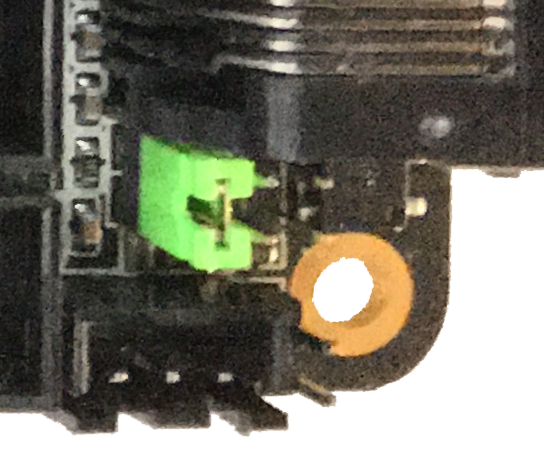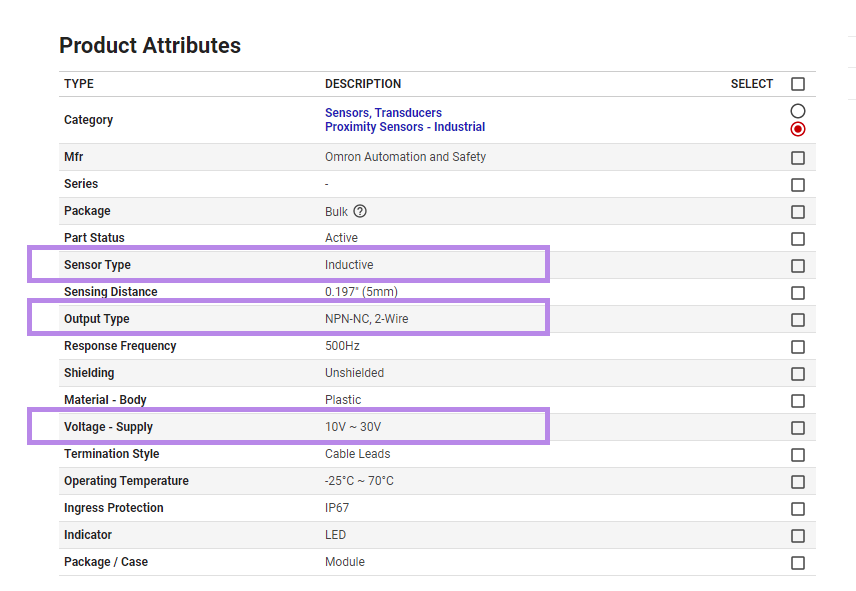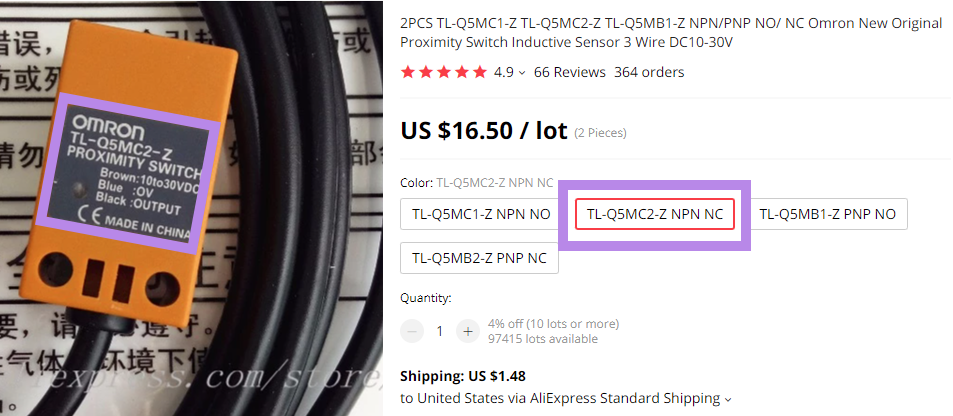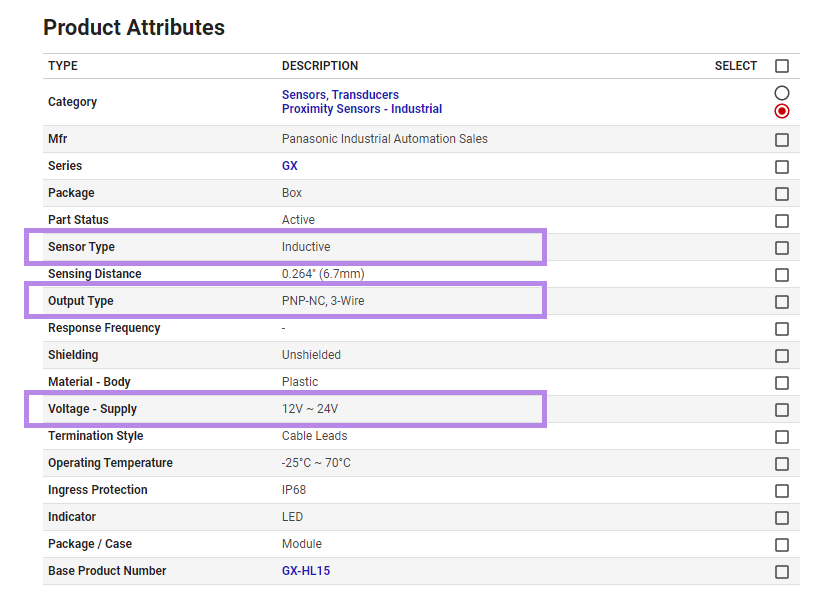BTT Octopus Pro Probe Port
- For reference, here is a small discussion on Reddit about how to determine your style of inductive probe, click here
The Voron BOM recommends the following Inductive Probe Sensors
- Omron TL-Q5MC2 from Digikey
- Omron “TL-Q5MC2-Z NPN NC” from Aliexpress
- Panasonic GX-HL15BI-P from Digikey
-
If you want more information about the “differences between a NPN and PNP style of probe”, here is a Google search that will help you.
-
What is necessary to know?
-
What type of Probe did I buy?
-
The seller’s website will tell you that information. Below are the three recommended Inductive probes, write down the information displayed in the PURPLE boxes:
-
From Digikey website for Omron TL-Q5MC2:
From Aliexpress website for Omron TL-Q5MC2-Z:
Form Digikey website for Panasonic GX-HL15BI-P:
- Now, you have the information on the style of probe you own (i.e. NPN or PNP) and its default state (NO-normally open or NC-normally closed).
- Also, the operating voltage (supply voltage) of the inductive probe is now known.
- This information is needed so jumpers can be set that effect the Octopus Pro board’s PROBE connector.
Understanding the Octopus Pro PROBE PORT:
- Here is a picture of the Octopus Pro probe port:

- From the Color PIN Diagram of the Octopus Pro, here is a representation of the Octopus Pro probe port from above:

What is the PIN Diagram telling me?
If you look at the picture of the Color PIN diagram from above, there are three portions of the PROBE port that need to be addressed. The item labeled as “PROBE” and another item labeled as “PROBE Voltage Select (DC)” and finally the last item labeled “Probe Type” (probe style).
-
The item labeled “PROBE”, shown in the YELLOW box in the diagram below, is the connector that is used when wiring up the inductive probe sensor
-
The “PROBE Voltage Select (DC)”, shown in the ORANGE box in the diagram below, sets the voltage level that will appear on the DC pin of the “PROBE” port (which is labeled “PROBE Voltage Select (DC)”). The Jumper can set the voltage to be 5VDC, 12VDC or 24VDC. From the picture of the Octopus PROBE port above, the Voron printer setup sets the voltage to 24VDC.
-
From the data obtained from the seller’s website, ensure the inductive probe can run at 24VDC (supply voltage). If it does not, then the jumper “PROBE Voltage Select (DC)” will need to be changed to match the Probe’s voltage supply.
-
The “Probe Type” is the Probe style, as seen in the PURPLE box in the diagram below, that you wrote down earlier from the seller’s website.
- Both Digikey’s Omron TLQ5MC2 and the Aliexpress’ Omron TL-Q5MC2-Z are a NPN style probes with a default state of NC (normally closed).
-
The Digikey’s Panasonic GX-HL15BI-P is a PNP style probe with a default state of NC (normally closed)
-
From the color pin diagram we see that the “Probe Type” header has two options: set the jumper for NPN. Remove the jumper for PNP.
- The color pin diagram also tells us that when we set the jumper for NPN we are basically adding in a 12k Ohm pull up resistor. So, all this jumper does is controls whether a 12k Ohm resistor is part of the PROBE port circuitry.
-
Here is a picture of the Octopus Pro probe port with colored boxes:

Why does the Voron Team recommend the use of an endstop pin instead of the dedicated probe port?
- The Voron Design Team has been dealing with inductive probes for a long time and has learned the following over the years from their test data and experience with helping Voron users setup probe devices:
- test data shows, an optocoupler, which some MCU boards incorporate in to the PROBE circuit, adds a noticeable signal delay;
- the probe port is significantly less likely to work (across different MCU boards) than just using the normal endstop port;
- if the inductive probe fails, people will exchange the inductive probe for a probe that utilizes a mechanical switch which requires an endstop port. By wiring the inductive probe up to the endstop port in the first place, this interchangeability can now occur easily.


